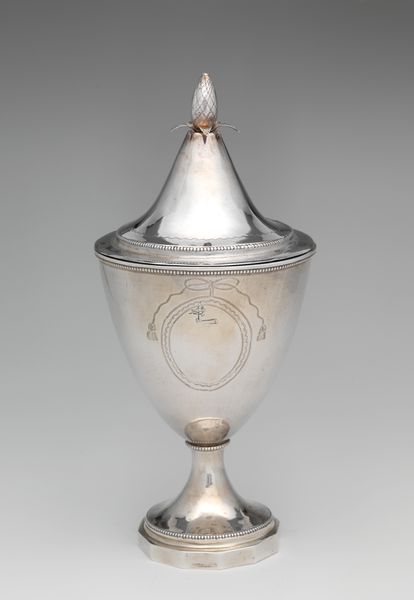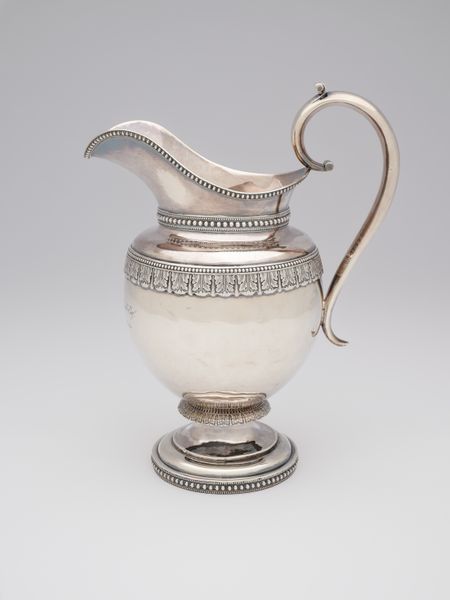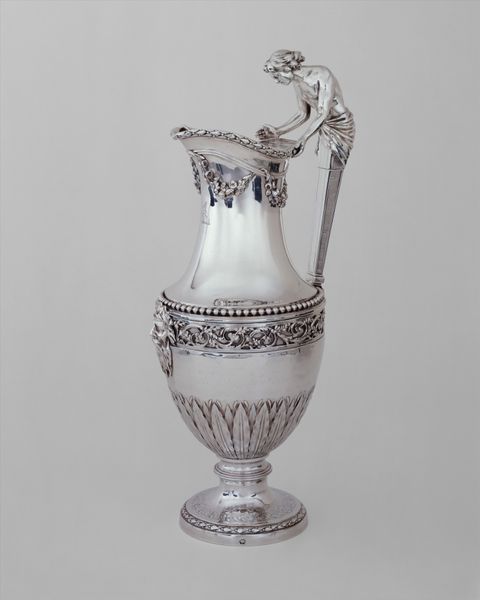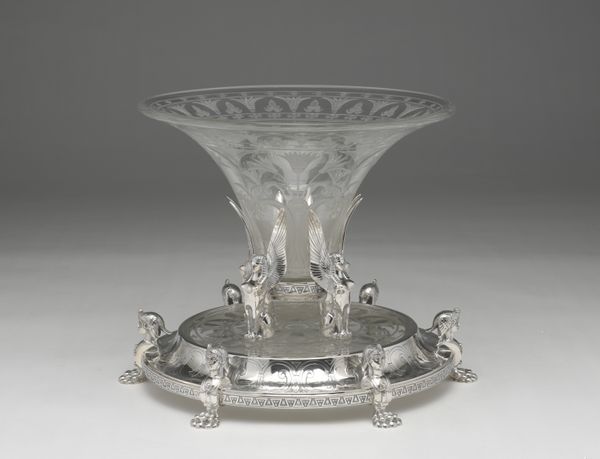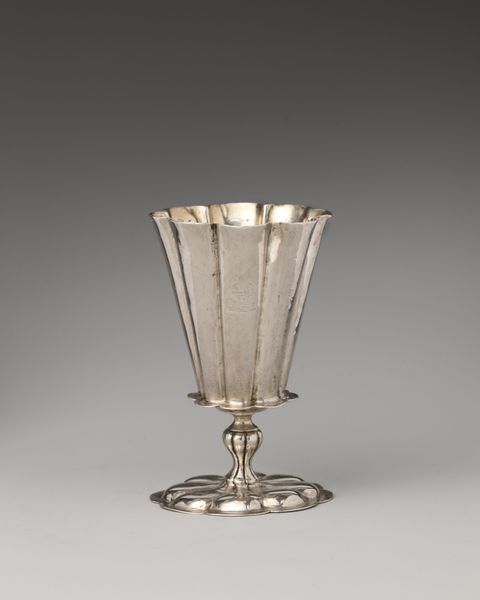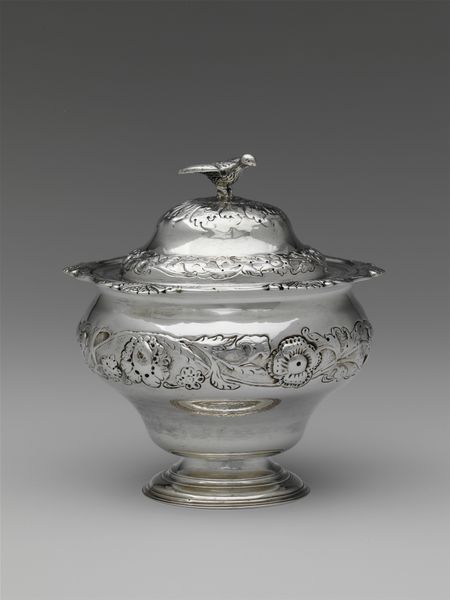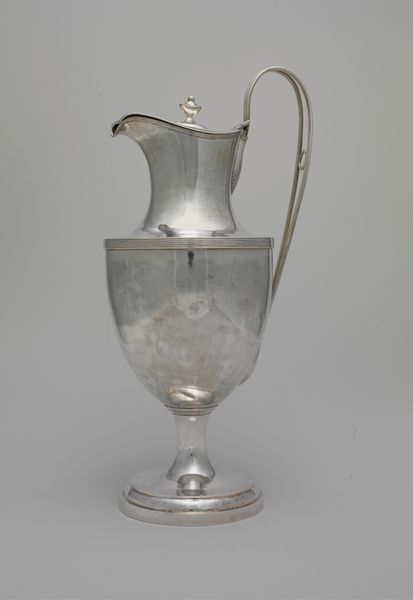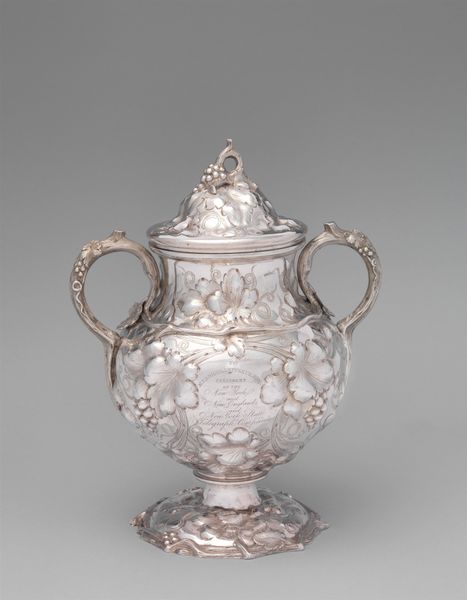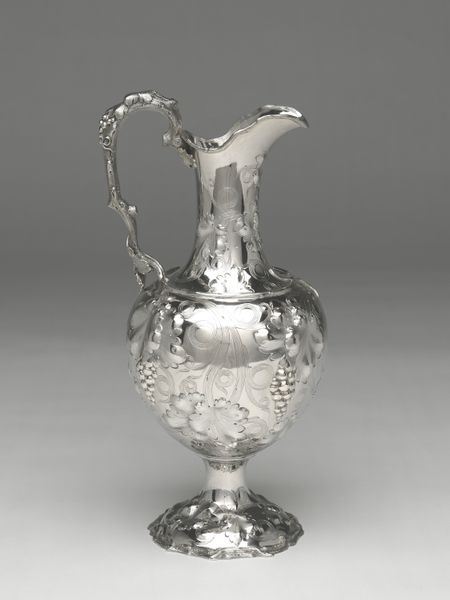
ceramic, glass, sculpture
#
ceramic
#
glass
#
sculpture
#
ceramic
#
decorative-art
Dimensions: Overall: 12 3/4 × 6 3/4 in. (32.4 × 17.1 cm)
Copyright: Public Domain
Editor: We’re looking at a vase, crafted sometime between 1855 and 1865 by Antonio Salviati, currently held at the Met. It seems to be made of glass and ceramic, and its style is described as decorative art. I find its subdued color palette quite elegant. What is your interpretation of this piece? Curator: This vase speaks volumes about the burgeoning decorative arts movement and the revival of Venetian glassmaking in the mid-19th century. Consider how objects like these, crafted with such historical consciousness, participated in shaping national identity and projecting cultural power. Salviati’s work, heavily influenced by Venetian traditions, aimed to revitalize the image of Venice through luxury artisanal production. Editor: So it wasn't just about making pretty things? It had a larger purpose? Curator: Exactly! Think about how the re-establishment of the glass industry also had social and political ramifications. Craft revivals often connect to larger movements of cultural and national assertion. What might a piece like this have symbolized to potential buyers or those who displayed it? Editor: Perhaps an appreciation for history, or a connection to Venetian culture for those outside of Italy. I hadn’t really thought of it that way, more than just a pretty vase, but really, an active participant in projecting a particular image of a place. Curator: Precisely. It prompts questions about how museums themselves influence the value and meaning we attach to objects, doesn’t it? Editor: Yes, absolutely! Now I see it’s more than just decorative; it's a symbol of cultural and historical forces. Thank you!
Comments
No comments
Be the first to comment and join the conversation on the ultimate creative platform.


